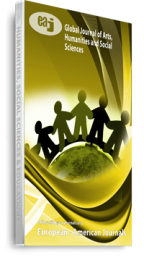This study attempts to understand how the aesthetic aspects of the Qur’an are translated into or accommodated in English. It clarifies slightly challenges in translating the Qur’an, a text believed by Moslems to be the word of God and as such beautiful beyond imagination. To get a feel of its poetic essence, particularly in its rhythmic verses, and the task that lies ahead for translators, three short “surahs” (verses) and seven well-known translations of each were analysed. The theory of equivalence was used to measure. It was found that all surahs showed rhythmic patterns (sound) that are distinctive, even to the untrained eye/ear. Readers who might not understand its meaning can still appreciate its poetry. None of the translations, however, could reproduce these rhythmic patterns that help memorization of the surahs. In summary, the pervasiveness of rhythmic elements is clear and a real challenge awaits the translator of this text.
Keywords: Aesthetics, Equivalence, Poetry, Qur’an, Rhythmic Patterns

